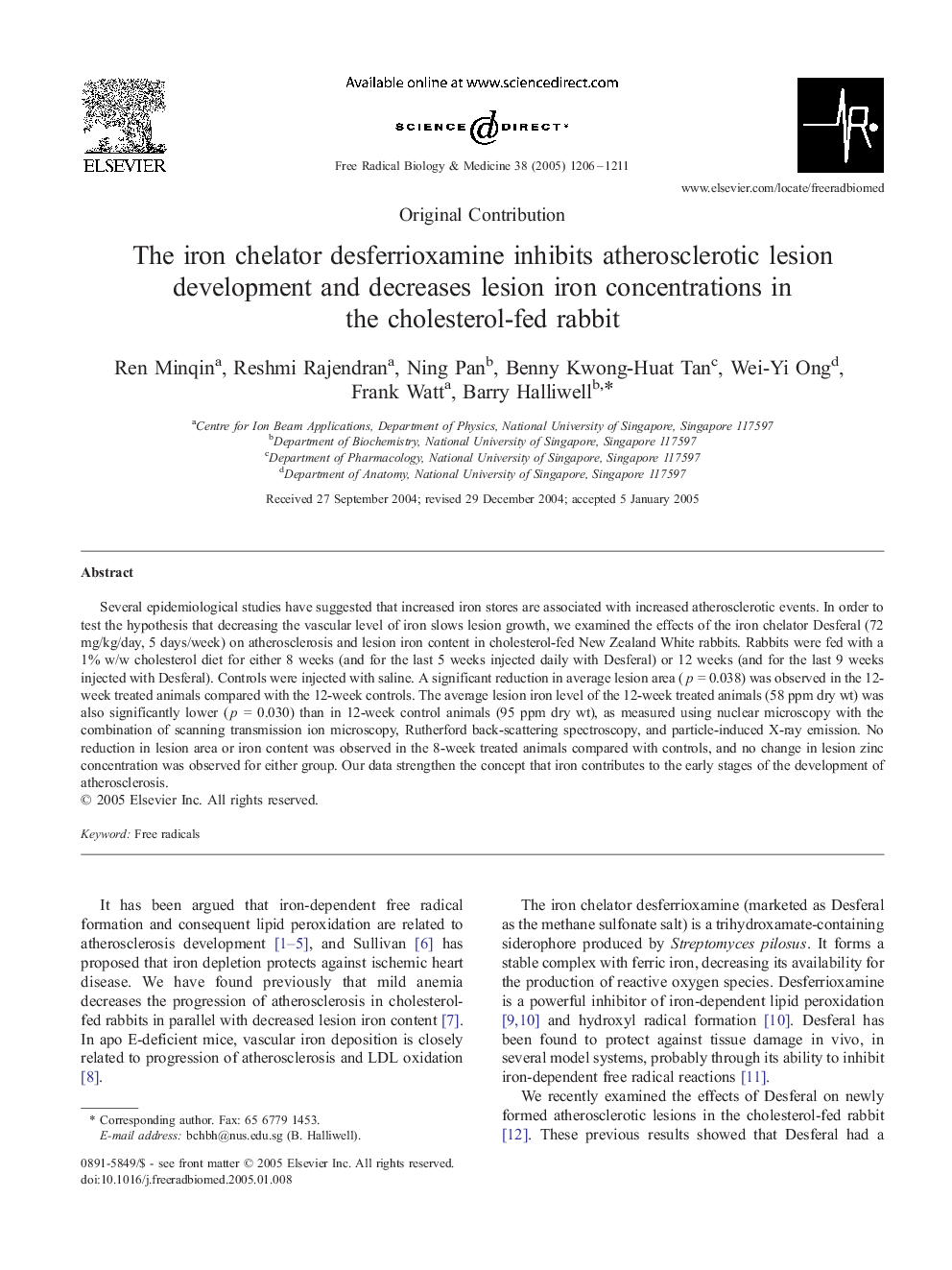| Article ID | Journal | Published Year | Pages | File Type |
|---|---|---|---|---|
| 10738876 | Free Radical Biology and Medicine | 2005 | 6 Pages |
Abstract
Several epidemiological studies have suggested that increased iron stores are associated with increased atherosclerotic events. In order to test the hypothesis that decreasing the vascular level of iron slows lesion growth, we examined the effects of the iron chelator Desferal (72 mg/kg/day, 5 days/week) on atherosclerosis and lesion iron content in cholesterol-fed New Zealand White rabbits. Rabbits were fed with a 1% w/w cholesterol diet for either 8 weeks (and for the last 5 weeks injected daily with Desferal) or 12 weeks (and for the last 9 weeks injected with Desferal). Controls were injected with saline. A significant reduction in average lesion area (p = 0.038) was observed in the 12-week treated animals compared with the 12-week controls. The average lesion iron level of the 12-week treated animals (58 ppm dry wt) was also significantly lower (p = 0.030) than in 12-week control animals (95 ppm dry wt), as measured using nuclear microscopy with the combination of scanning transmission ion microscopy, Rutherford back-scattering spectroscopy, and particle-induced X-ray emission. No reduction in lesion area or iron content was observed in the 8-week treated animals compared with controls, and no change in lesion zinc concentration was observed for either group. Our data strengthen the concept that iron contributes to the early stages of the development of atherosclerosis.
Related Topics
Life Sciences
Biochemistry, Genetics and Molecular Biology
Ageing
Authors
Ren Minqin, Reshmi Rajendran, Ning Pan, Benny Kwong-Huat Tan, Wei-Yi Ong, Frank Watt, Barry Halliwell,
